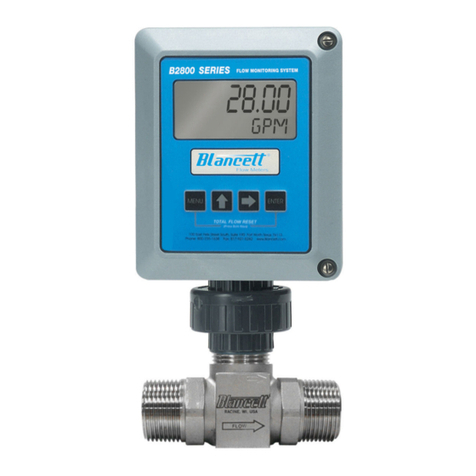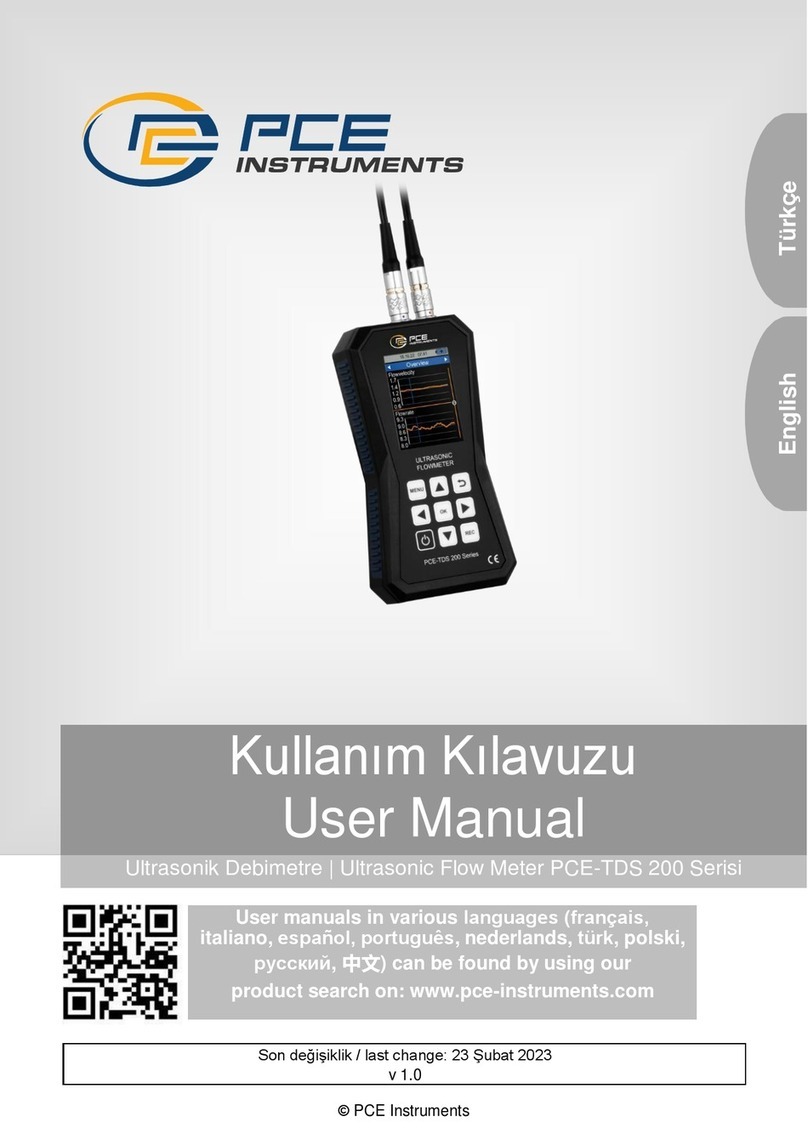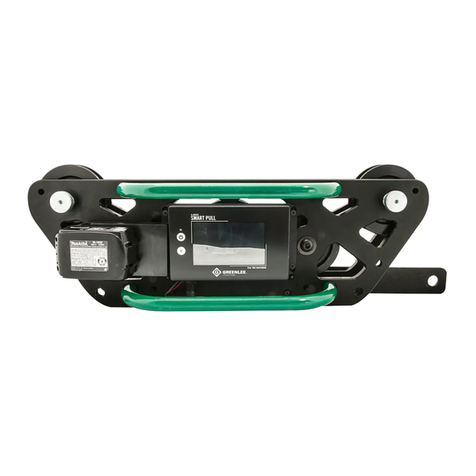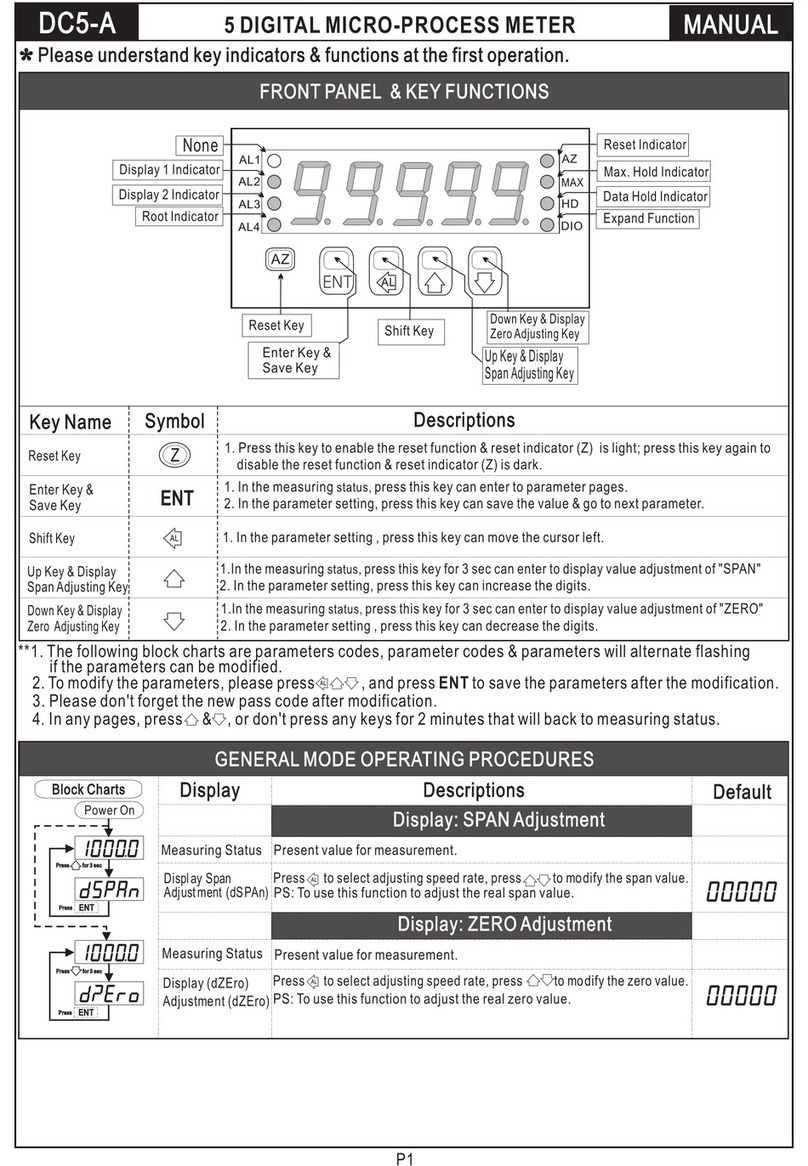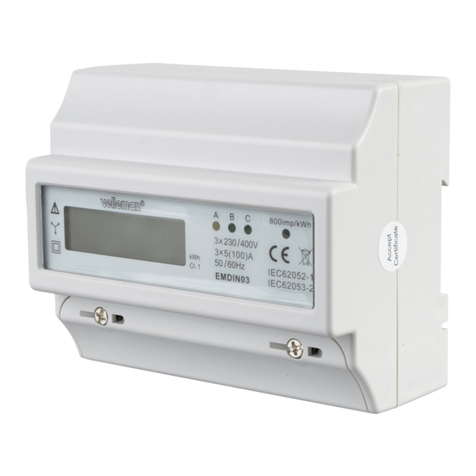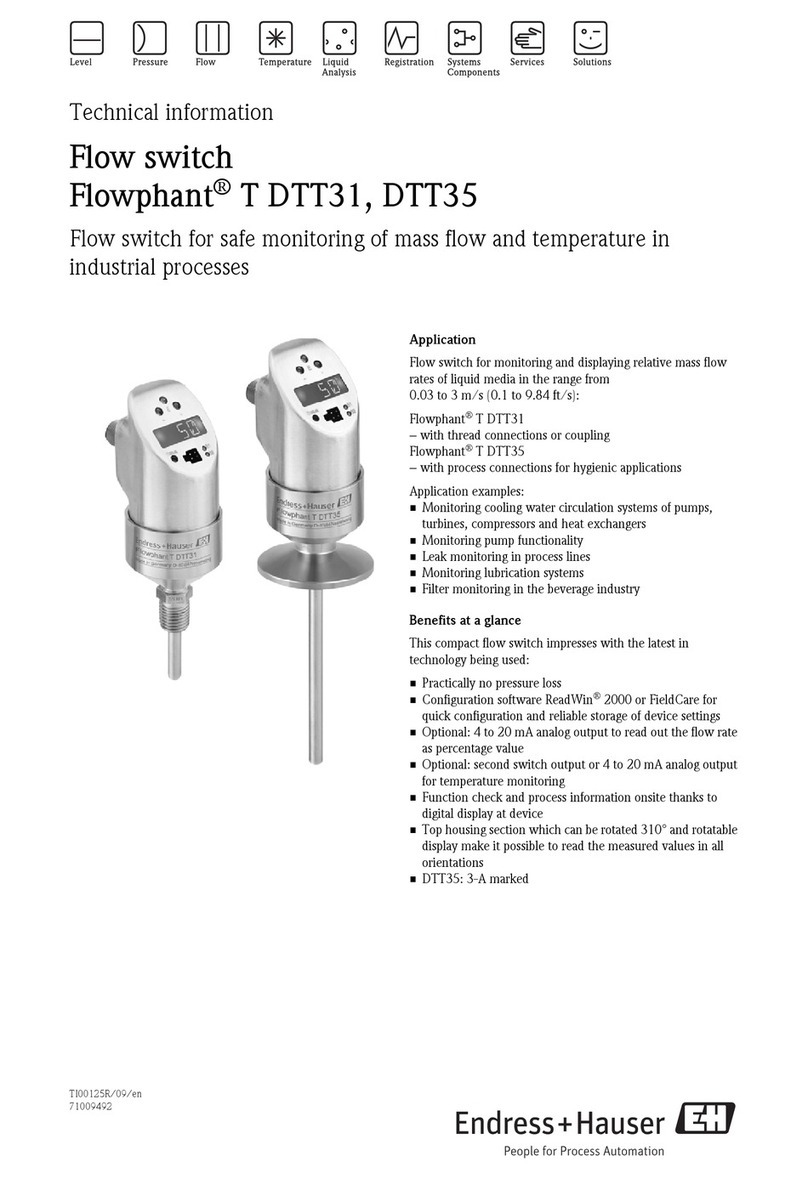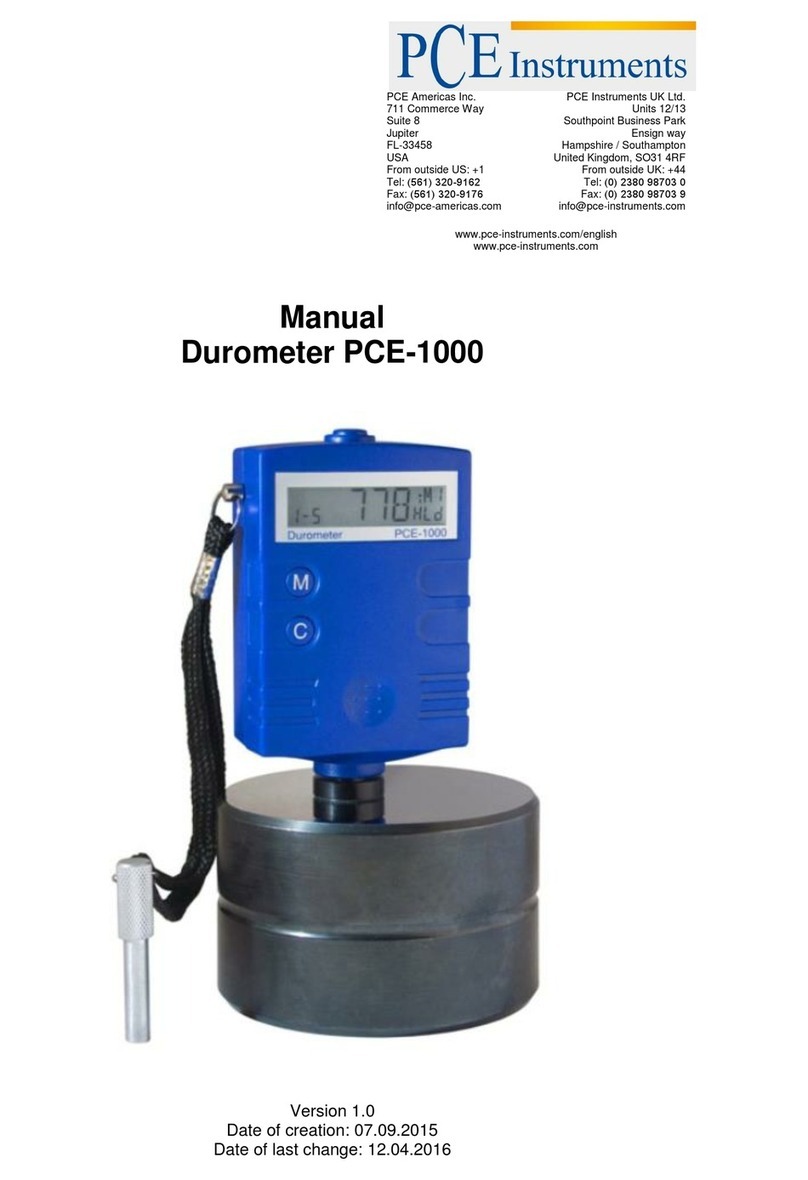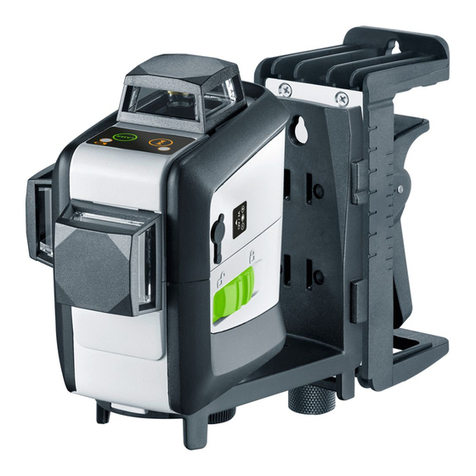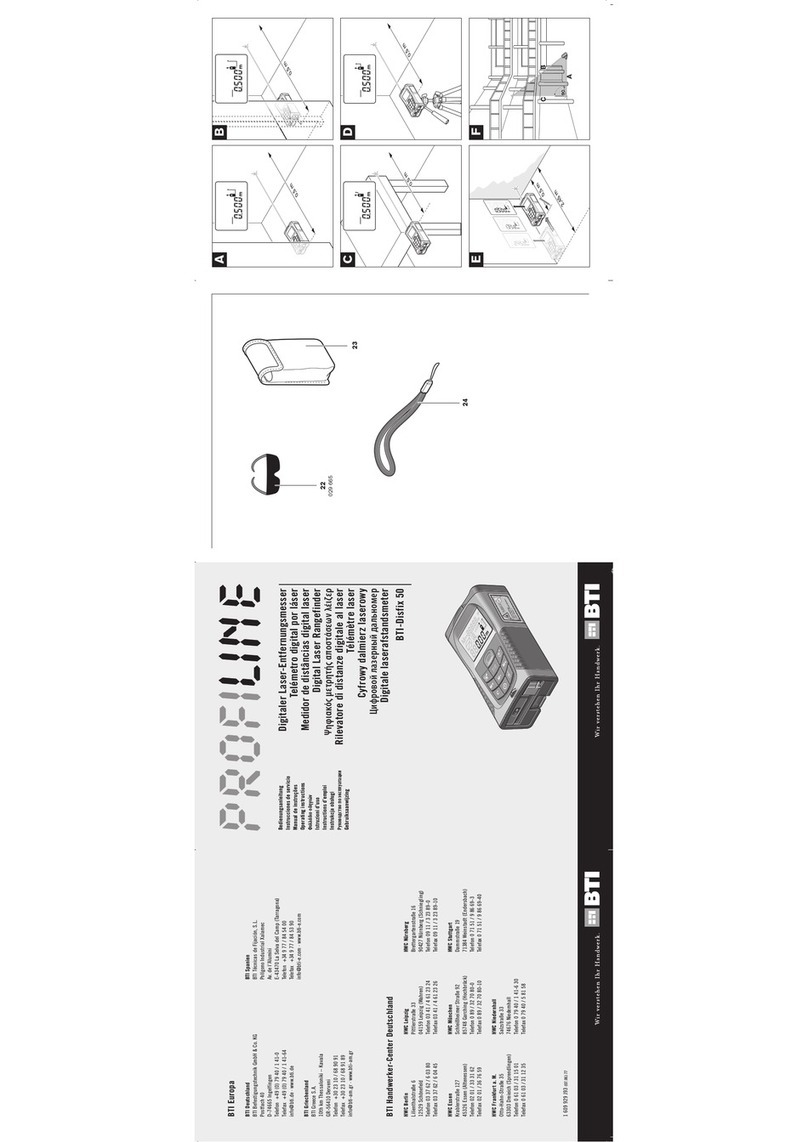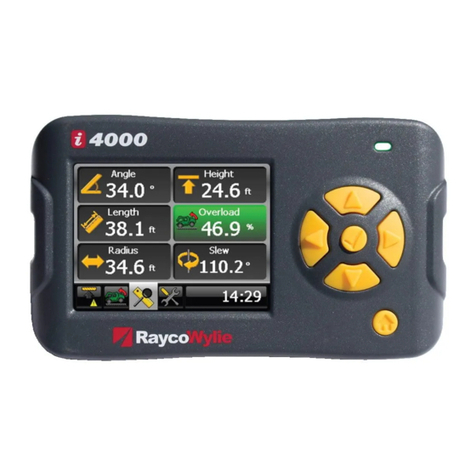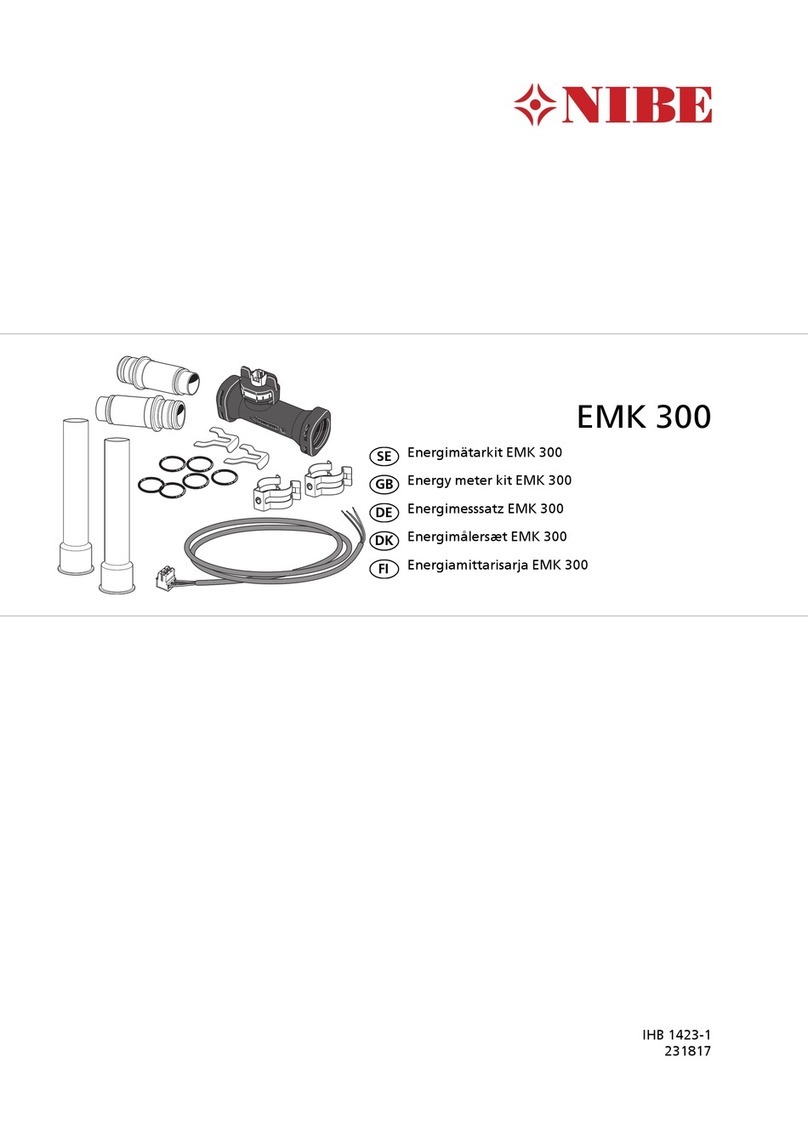Soltec HM-102S User manual

OPERATORS
MANUAL
VOM-MULTITESTER
20.000
ohms/volts
DC
model
HM-1OZS
5‘3
2.506
m
.
14201941140
DCMAW‘J
t—a—QRM
UAW-~13
501.3156?
1‘»
pin-:02:
scanned
by
scruss
nn
ZBU'U'IZ
'
Blease
EDD!
freely
but
leave
this
message
intact

SECTION
1
INTRODUCTION
L1
GENERAL
"1.131
The
SOLTEC
HM-102S
Volt-Ohm-Milliammeter
(hereafter
referred
to
as
the
HM-102S
or
the
Instrument)
is
a
;high
sensitivity
instrument
(20,000
ohms/volt
DC
and
8,000
ohms/volt
AC),
ideal
for
use
where
measure-
ments
must
not
appreciably
disturb
the
circuit
being
tested.
'1.
1.
2.
Built
in
a
modern
high-impact
case,
the
HM-102S
is
a
quality
product
in
both
performance
and
appearance.
Available
are
seven
DC
and
six
AC
voltage
ranges,
five
dB
ranges,
five
DC
current
ranges
and
fourresistance
ranges.
A
mirrored
dial
is
included
to help
eliminate
errors
in
readings
due
to
parallax
and
a
dB
conversion
chart
is
printed
on
the
dial
face.
Special
circuitry
has
been
included
to
protect
the
meter
movement
against
accidental
overloads.
Another
feature
of
the
Instru-
ment
is
a
built-in,
convenient
carrying
handle
which
can
also
be
used
to
position
the
HM-102S
at
an
angle
for
easy
reading.
An
optional
carrying
case
is
also
available.
scanned
by
scruss
nn
Zfll7'll'lZ
'
nlease
EDD!
freely
but
leave
this
message
tttttt

1.
2.
SPECIFICATIONS
1.2.1.
1.
2.
2.
1.
2.
3.
1.
2.4.
1.
2.
5.
DC
Voltage
Ranges:
00.25,
2.5,
10,
50,
250,
500,
1000V
(separate
jack)
Sensitivity:
20,000
ohms/volt
Accuracy:
i3%
of
full
scale
AC
Voltage
Ranges:
02.5,
10,
50,
250,
500,
1ooov
(separate
jack)
Sensitivity:
8,000
ohms/volt
Accuracy:
i
5%
of
full
scale
DC
Current
Ranges:
0-50uA,
0.5,
5,
50,
500mA
Accuracy
:
i3%
of
full
scale
Decibels
Ranges
:
-20dB
to
56dB
in
5
ranges
(OdB:
1mW
@
6009)
Resistance
Ranges
:
0-20
megohms
in
4
ranges
(center
scale
at
20,
200,
20K,
ZOOKQ).
Accuracy
:
i
3° of
arc
_
2
_
scammed
by
scruss
nm
Zfll7'll'lZ
'
nlease
Eng!
freely
but
leave
this
message
tttttt

1.
2.
6.
Power
Requirements:
Two
1.5
volt
"AA"
type
batteries,
NEDA
type
15F,
and
one
9
volt
battery,
NEDA
type
1604.
1.
2.
7.
FusezLittlefuse
2112.002
(2A)
Fast
Acting
(or
equivalent)
1.
2.
8.
Dimensions:
31/2”
wide
x
51/4"
long
x
11/2"
high
1.
2.
9.
Weight:
10.8
ounces
(including
batteries).
1.
3.
ITEMS
FURNISHED
WITH
INSTRUMENT
One
set
of
test
leads,
one
9
volt
and
two
1.5
volt
batteries,
one
fuse
and
an
operator's
manual.
SECTION
'II
CONTROLS
AND
JACKS
2.
1.
GENERAL
2.1.1.
All
operating
and
adjustment
controls,
and
jacks
are
described
in
this
section.
The
operator
should
become
familiar
with
each
item
prior
to
operating
the
Instrument.
scammed
by
scruss
nm
Zfll7'll'lZ
'
nlease
Eng!
freely
but
leave
this
message
tttttt

1.
Function
and
Range
Switch:
This
control
is
located
in
the
lower
center
of
the
front
panel
and
it
com-
bines
the
operations
of
selecting
the
function
and
desired
range
as
well
having
an
”OFF"
position.
To
extend
the
life
of
the
batteries,
the
switch
should
be
in
this
'
OFF"
position
when
the
Instrument
is
not
in
use.
2.
Zero
Ohms
Ad'mst
Control:
Located
on
the
left
side
of
the
front panel
this
control
is
used
to
obtain
a
"0"
indication
on
the
ohms
scale
when
the
test
leads
are
shorted
together.
During
operation,
the
zero
indication
should
be
checked
each
time
the
ohmmeter
is
to
be
used.
This
permits
compensation
.for
the
aging
of
the
internal
batteries.
If
the
zero
adjustment
cannot
be
made,
replace
batteries.
3.
Zero
Mechanical
Adjust:
This
adjustment
is
the
plastic
screw
located
in
the
bottom
center
of
the
dial
cover
and
is
used
to
correct
any
pointer
error
(off
“0"),
when
the
Instrument
is
in
an
operating
position.
4.
(—)COM/+Sl
Jack:
Plug
in
connection
for
black
(negative)
test
lead.
scammed
by
scruss
nm
Zfll7'll'lZ
'
nlease
Eng!
freely
but
leave
this
message
tttttt

5.
(+)V—Q—A
Jack:
Plug
in
connection
for
red
(positive)
test
lead
for
all
ranges
except
when
measuring
AC
and
DC
voltages
exceeding
500.
6.
DC
1KV
Jack:
Plug
in
connection
for
red
test
lead
when
making
measurements
between
500
and
1000
volts
DC.
Function
and
Range
switch
must
be
set
in
the
“500
&
UP"
position.
7.
AC
1KV
Jack:
Plug
in
connection
for
red
test
lead
when
making
measUrements
between
500
and
1000
volts
AC.
Function
and
Range
switch
must
be
set
in
the
“500
&
UP"
position.
SECTION
III
OPERATION
3.
1.
SAFETY
PRECAUTIONS
3.1.1.
Instruments
of
this
type
are
intended
to
be
used
only
in
low-power
product
type
applications
such
as
radio,
TV,
personal
computers
and
the
like.
scammed
by
scruss
nm
Zfll7'll'lZ
'
nlease
Eng!
freely
but
leave
this
message
tttttt

3.1.2.
Frequently
inspect
the
test
leads
and
the
Instrument
for
damage
and/or
deteriorating
insulation
and
replace
faulty
items
immediately.
3. 1.
3.
Never
work
alone
with
high
voltage
circuits.
3.
1.
4.
Before
connecting
the
Instrument
to
a
circuit,
become
familiar
with
the
circuit
to
determine
the
highest
voltage
levels
likely
to
be
encountered.
3.
1.
5.
The
small
size
of
this
Instrument
might
tempt
the
user
to
hold
it
while
making
measurements.
Avoid
this
practice
especially
when
working
in
circuits
that
might
contain
a
shock
hazard.
3.
1.
6.
Develop
safe
habits
by
turning
off
the
power
to
the
measured
circuit
and
discharge
any
capacitors
before
handling
the
test
leads.
3.1.7.
If
the
approximate
value
of
the
voltage
or
current
to
be
measured
is
not
known,
always
set
the
Instrument
to
its
highest
range
for
the
first
measure-
ment
to
determine
the
proper
range
to
be
used.
3.1.
8.
Electrical
measurements
to
be
made
in
the
scammed
by
scruss
nm
Zfll7'll'lZ
'
nlease
Eng!
freely
but
leave
this
message
tttttt

presence
of
humidity
or
moisture
are
particularly
hazardous.
Hands,
shoes,
floor
and
workbench
must
be
dry.
3.1.9.
When
making
resistance
measurements,
all
power
to
circuits
must
be
removed
and
capacitors
discharged.
3.
2.
PARALLAX
ERRORS
3.
2.1.
To
avoid
such
errors,
take
the
reading
when
the
reflection
of
the
pointer
in
the
mirror
is
directly
behind
the
pointer
(one
image
only).
3.
3.
MEASURING
DC
VOL'TAGES
a.
Select
the
required
DC
voltage
range.
b.
Connect
the
black
lead
to
the (—l
jack
and
the
red
lead
to
the
(+)
jack
for
all
voltage
ranges
except
the
1KV
range.
For
the
1KV
range
connect
red
lead
to
the
DC
1KV
jack.
c.
Turn
on
power
in
the
circuit
to
be
measured.
d.
Observing
polarity,
connect
the
test
leads
across
the
circuit
or
component
where
the
voltage
is
to
be
measured.
e.
”Read
the
DC
voltage
on
the
appropriate
scale.
scammed
by
scruss
nm
Zfll7'll'lZ
'
nlease
Eng!
freely
but
leave
this
message
tttttt

0.0003
4.
MEASURING
AC
VOLTAGE'S
.
Select
the
required
AC
voltage
range.
.
Connect
the
test
leads
as
noted
in
paragraph
3.3
b
(above),
except
for
the
1KV
range.
For
the
1KV
range
connect
the
red
lead
to
the
AC
1KV
jack.
.
Turn
on
power
to
the
circuit
to
be
measured.
.
Connect
the
test
leads
across
the
circuit
or
compo-
nent
where
the
voltage
is
to
be
measured.
f
Read
the
AC
voltage
on
the
appropriate
scale.
.
5.
MEASURING
DC
CURRENT
.
Select
the
required
DC
current
range.
.
Connect
the
test
leads
to
the(+)
and(-)
lacks.
.
Turn
on
power
in
the
circuit
to
be
measured.
.
Observing
polarity,
connect
the
test
leads
in
series
with
the
circuit
or
component'to
be
measured
.
Observing
polarity,
connect
the
test
leads
in
series
with
the
circuit
or
component
to
be
measured
with
the
most
positive
potential
to
the(+)
jack.
.
Read
the
DC
current
on
the
appropriate
scale.
scammed
by
scruss
nm
Zfll7'll'lZ
'
nlease
Eng!
freely
but
leave
this
message
tttttt

3.
90'!»
6.
MEASURING
R
ESISTANCE
.
Select
the
required
OHM
range.
.
Connect
the
test
leads
to
the(+)
and
(—)jacks
Short
the
contact
ends
of
the
test
leads
and
observe
the
indication
on
the
Instrument.
.
Set
the
052
AJD
knob
for
a
meter
pointer
indica-
tion
of
0
ohms
(full
scale).
If
unable
to
adjust
for
0,
replace
both
1.5
volt
batteries
or
if
the
R
x
10K
range
scale
is
affected
replace
the
9V
battery
(refer
to
paragraph
4.
2).
Connect
test
leads
across
the
resistance
which
is
to
be
measured.
Observe
polarity
if
there
is
a
“forward"
or
"backward"
resistance
(as
in
the
case
of
diodes).The
polarity
of
output
when
in
OHM
ranges
is
opposite
to
jack
markings,
i.e.,
the
+
jack
is
negative
with
respect
to
the
—
jack.
Read
the
indication
on
the
52
(ohms)
scale
at
the
top
of
the
dial.
Note
that
the
arc
reads
from
right
to
left
for
increasing
values.
.
Multiply
the
reading
by
the
multiplier
factor
selected
in
the
switch
range
position.
scammed
by
scruss
nm
Zfll7'll'lZ
'
nlease
Eng!
freely
but
leave
this
message
tttttt

3.
9'
0.9
OJ
7.
MEASURING
DECIBELS
Select
the
500
&
UP
ACV
range
(if
voltage
is
unknown).
Connect
the
test
leads
as
noted
in
paragraph
3.5
b
(above).
Turn
on
the
power
in
the
circuit
'to
be
measured.
.
Connect
the
test
leads
across
the
circuit
or
com-
ponent
where
the
voltage
is
to
be measured.
.
Read
the
dB
scale.
Adjust
ranges
"downward",
if
appropriate,
until
the
largest
scale
indication
is
attained.
NOTE:
The
dB
scale
is
calibrated
to
a
reference
level
of
onemilliwatt
into
6009
where
OdB
is
0.774V
and
read
directly
on
the
2.5
VAC
range.
For
readings
of
greater
than
10dB,
greater
voltage
ranges
are
required
and.
the
dB
values
that
are
to
be
“added"
to
the
direct
scale
reading
are
exhibited
in
a
conversion
table
on
the
lower
right
hand
corner
of
the
dial
face.
Example:
Using
the
10
ACV
range
the
total
dB’s
measured
would
be
the
direct
scale
reading
plus
12.
On
the
50
ACV
range,
plus
26,
etc..
_10_
scammed
by
scruss
nm
Zfll7'll'lZ
'
nlease
Eng!
freely
but
leave
this
message
tttttt

SECTION
IV
MAINTENANCE
4.
1.
REMOVAL
OF
CASE
BACK
4.
1.
1.
The
Instrument
has
been
designed
to
provide
easy
access
for
all
necessary
replacement
of
parts.
It
is
only
necessary
to
remove
one
screw
from
the
back
of
the
Instrument
(center
of
the
case)
to
remove
the
back
of
the
case
to
gain
access
to
the
batteries
and
the
fuse.
4.
2.
BATTERY
REPLACEMENT
4.
2.
1.
Remove
the
back
of
the
case.
4.
2.
2.
Note
the
orientation
and
location
of
all
the
batteries.
When
the
Ohms
Adjust
control
cannot
be
adjusted
for
zero
ohms
(with
shorted
test
leads)
it
is
generally
an
indication
that
one
or
both
of
the
1.5
volt
"AA”
batteries
needs
replacement
for
any
or
all
the
ranges
except
the
R
x
10K.
(It
is
recOmmended
that
both
batteries
be
replaced
at
the
same
time.)
The
R
x
10K
range
battery
is
the
9
volt
battery.
_11_.
scammed
by
scruss
nm
Zfll7'll'lZ
'
nlease
Eng!
freely
but
leave
this
message
tttttt

4.2.3.
Remove
the
old
batteries
and
replace
with
new,
noting
the
+
indication
in
the
1.5
volt
battery
compartments.
The
9
volt
battery
has
a
self-polariz-
ing
snap-on
connector.
Make
sure
that
the
battery
terminals
in
each
compartment
make
good
contact
with
the
battery,
otherwise
resistance
measurements
would
be
erroneous.
4.
2.
4.
Replace
back
of
case,
insert
the
plastic
screw
and
tighten
snugly,
being
careful
not
to
overtighten.
4.
3.
FUSE
REPLACEMENT
4.3.1.
Should
the
Instrument
stop
working
it
is
possible
that
the
fuse
has
blown.
To
ensure
maximum
protection
to
the
In-
strument,
do
not
replace
the
fuse
with
one
of
different
type
voltage
rating,
or
with
a
“slo-
blo"
type.
4.
3.
2.
Remove
the
back
of
the
case.
4.
3.
3.
Inspect
and
Teplace
fuse
if
necessary.
4.
3.
4.
Replace
back
of
case.
_
12
_
scammed
by
scruss
nm
Zfll7'll'lZ
'
nlease
Eng!
freely
but
leave
this
message
tttttt

scammed
by
scruss
nm
Zfll7'll'lZ
'
nlease
Eng!
freely
but
leave
this
message
imtar.t
ATIC
DIAGRAIL
1:.
0825
I0
me2-6
0
50200000
”u
(000)
(IOW)
l—Dcv
——I
l—Acv—l
+.
ACIOOOV
DC
IOOOV
500
[—
VIZ'I
Jon
I
ZKQO
UA
053.4
II
INCH
DI
00m
60
BI
I
3V
l2
'IA"
I!
OVII'DOGP“
F
ZAZBOV

scammed
by
scruss
nm
Zfll7'll'lZ
'
nlease
Eng!
freely
but
leave
this
message
imtar.t
Table of contents
